This post contains affiliate links for which I may make a small commission to help keep the site running. You will not be charged extra for these items had you not clicked the links. Thank you for your help to keep the site running!
Ready to uncover the difference between bacon in the UK and US.
This is a difference that is immediately obvious to every British person whose ever been to America and every American whose ever been to the UK – there is no chance traditional British bacon, ie, the kind served with an English breakfast, would ever pass for American bacon, and same the other way!
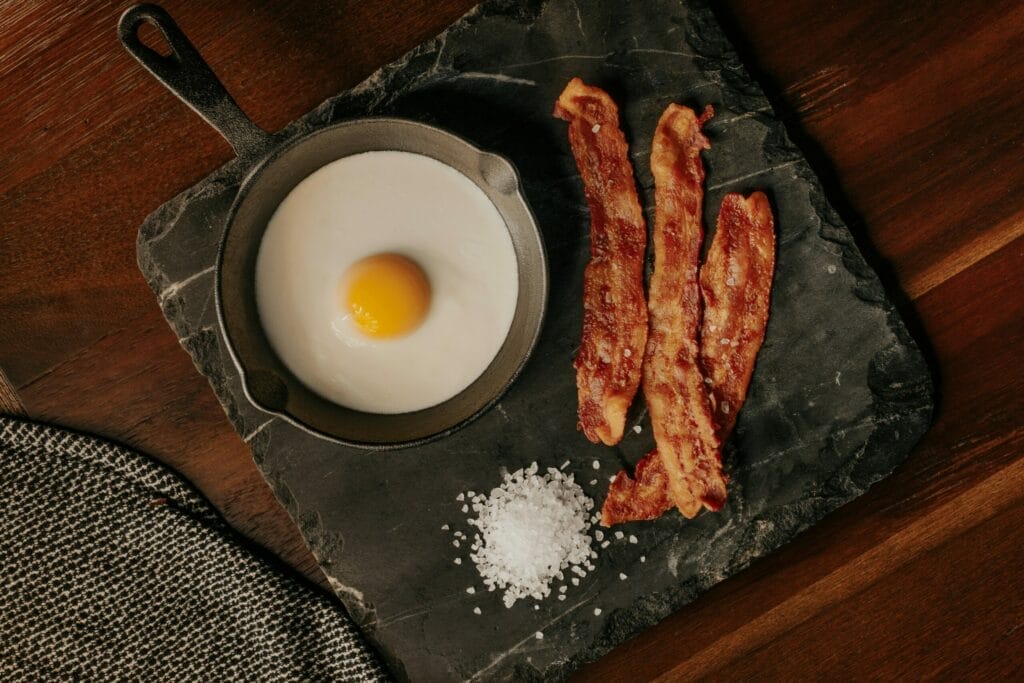
Differences in Cuts of Bacon
The first difference is really just based on what you can see in the photos – British bacon is often in bigger pieces than American bacon, which is usually cut into strips.
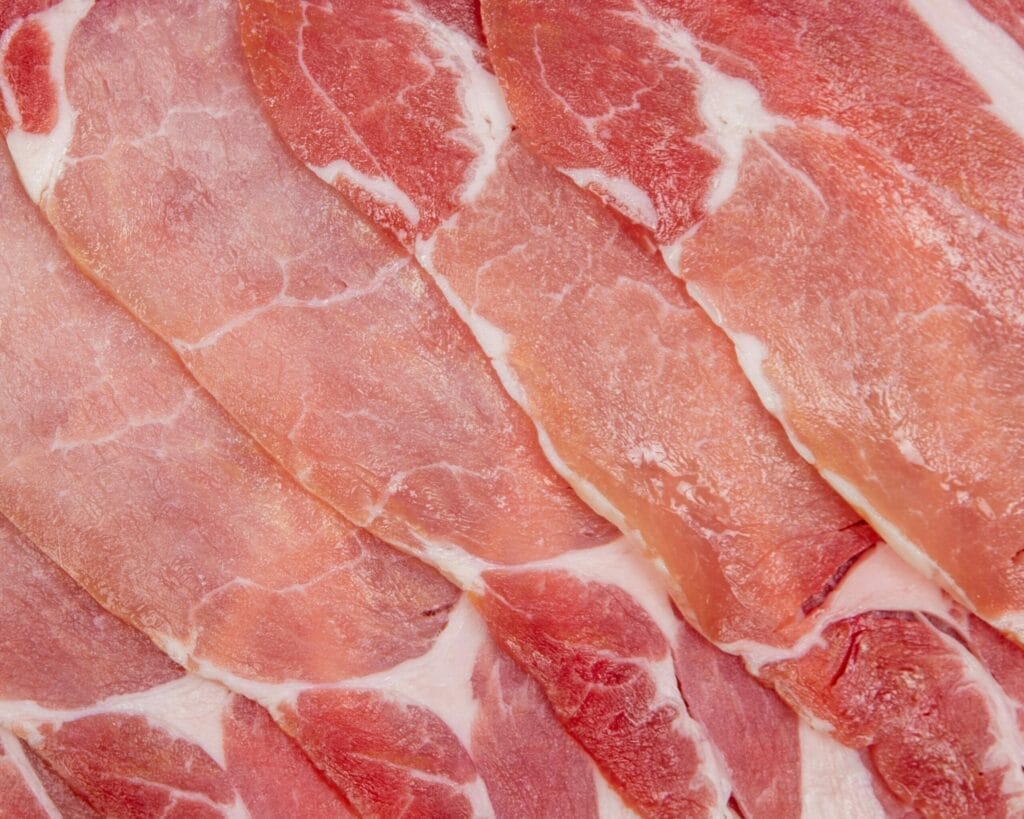
You can get “streaky” bacon in the UK, cut into strips similar to American bacons, BUT, even this bacon is different in some ways to American bacon, which we’ll go over in a bit.
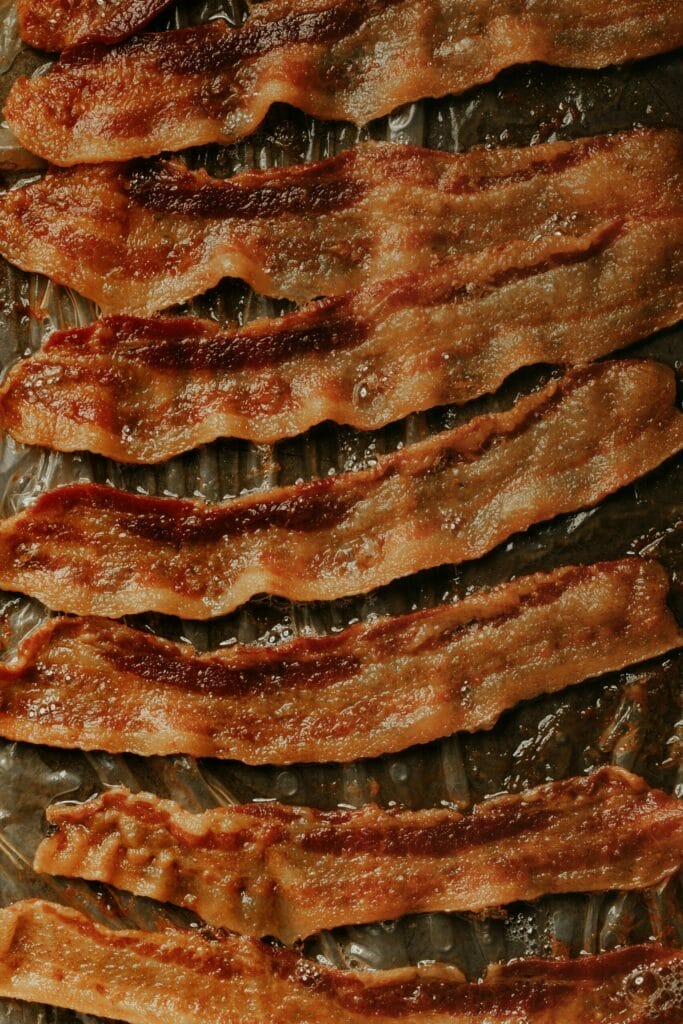
Another difference is that British bacon, back bacon, is cut from the loin of the pig, like a pork tenderloin.
American bacon, however, comes from pork belly. American bacon, then, has more a lot more fat than the leaner cut of British bacon.
Sidenote: Americans actually call our version of British bacon, “Canadian bacon”, and we do use it in a few dishes, like with Eggs benedict. However, typically when Americans are talking about bacon, they’re talking about American bacon, which they’re eating with eggs and pancakes or waffles or whatever else is on the breakfast plate – or it’s in a lunchtime sandwich, like a BLT, or it’s sprinkled in a dinner dish like bacon mac and cheese.
Anyway, British bacon is going to have some chew to it – you can cut it up with a fork and knife, and sometimes, if it’s not cooked enough, it’s, for lack of a better word, floppy.
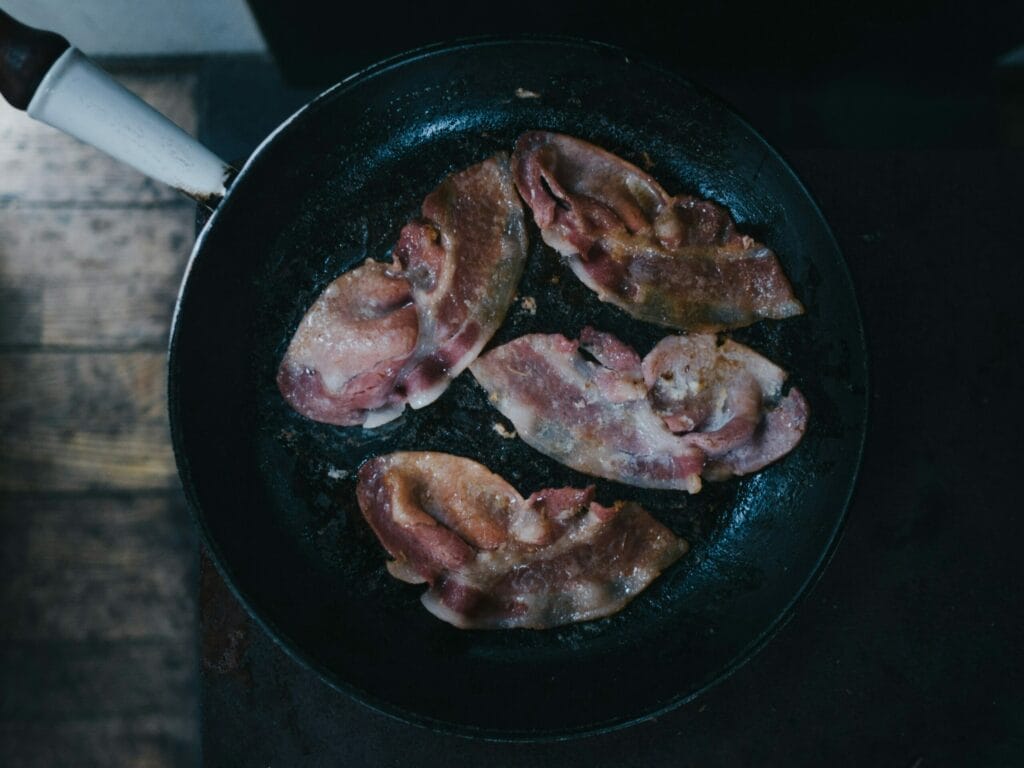
It’s got a lot more actual meat to it, rather than just fat.
American bacon is almost always cooked until crispy – so much so that you can usually snap it in half, and some people prefer extra crispy, which essentially means it will shatter into a million pieces the second you bite into it.
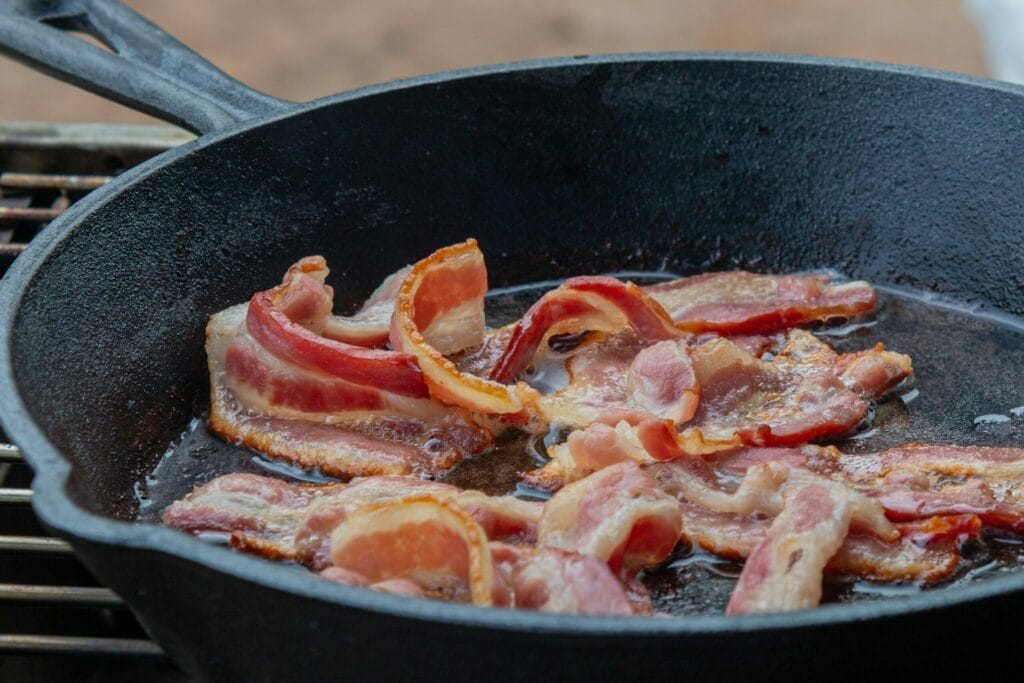
You’ll see a lot of complaints about this from the Brits, saying things like, “meat shouldn’t be crunchy” and “the bacon in the US is grim, just vile,” but the criticism also goes the other way with Americans saying things like, “most Americans are disappointed by British style bacon” and “English bacon isn’t what we consider bacon.”
And actually, they’re not wrong – the USDA, US Department of Agriculture, has declared in all of their infinite power, that the word “bacon” in the US only refers to the cured belly of a swine” – if the bacon is made from other parts of the pig, it has to be labelled like that, such as in “pork shoulder bacon,” so if you just ask for bacon, you’re always getting the pork belly by default. You can find back bacon in the US, but TECHNICALLY, it is not considered bacon.
Smokiness/Flavor
Another major difference is in the flavor of the bacon, that doesn’t just come from the differences in the cuts of meat, but also because in the US, bacon is smoked by default, usually with hickory wood, though sometimes apple wood.
While in the UK, this isn’t necessarily the default – though you can buy smoked bacon.
Bacon History
Let’s try and answer the “why” of the bacon cuts and how each country went their own separate ways, as well as a little bacon history for your day.
In the UK, there actually used to be a class divide between using back bacon and streaky bacon.
Before the Second World War, streaky bacon was often all that the working class could afford and was more popular.
Back bacon was more expensive, thus preferred by the middle class, and in the 60s and 70s, it gained a sort of prestige over streaky bacon and became the default – this was also helped by the development of Danish pork production, which meant that back bacon became more affordable and accessible and streaky bacon was relegated to being used for things like pigs in blankets or wrapping up joints for roasting.
One of the most interesting theories I’ve read regarding American love for the belly bacon, is that it may have something to do with culture – there are large numbers of German and Italian immigrants in the USA, and their own versions of bacon also come from the belly, meaning that overall, belly bacon would be preferred by more people and develop more of a cultural significance in the US.
This is further cemented by the fact that bacon was popularized in the US by a German, Oscar Mayer, who moved to America at age 14 and eventually received at patent in 1924 for America’s first presliced packaged bacon.
How Americans vs Brits Eat Bacon
Because of the different cuts of bacon, it’s eaten in both countries in different ways – sometimes.
Now, it’s mostly considered a breakfast item in both countries – an important part of the classic breakfast plate.
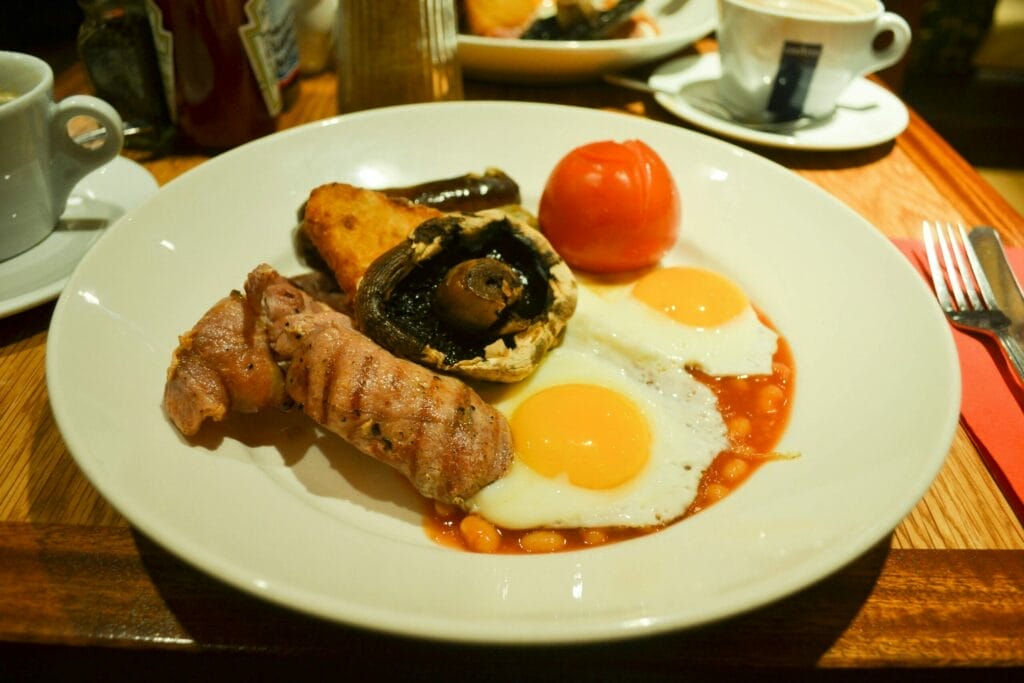
Americans definitely have bacon as a side dish for breakfast, with bacon and eggs being very popular, as well as bacon and pancakes or bacon and waffles.
Bacon is an important part of a “full English breakfast” for many people in the UK, also served as a side.
Then you’ve got the sandwich variety – in the UK, a bacon sandwich is definitely a thing, which is sometimes nothing more than a roll or bun and bacon sandwiched in between.
Because it’s a chewier and meatier cut, it doesn’t need much more within the sandwich.
In the US, we do add bacon to our breakfast sandwiches, but it’s also usually something like a bacon, egg, and cheese biscuit or sandwich, or adding it to a BLT sandwich, a bacon, lettuce, and tomato sandwich.
The other difference with how bacon is consumed is that because American bacon is easily crumbled and cracked and broken apart, we use it as a topping a lot – so maybe you have mac and cheese with bacon on top or baked beans with bacon bits, etc.
Bacon bits are also a popular topping on a baked potato in the US.
British bacon doesn’t crumble or break apart like that, which explains why it’s not often used in the same way.
But then of course America has to get weird, and has so many strange ways of consuming bacon in various restaurants across the US, like bacon on a stick, bacon cocktails, and the Wendy’s baconator.
How much do people love bacon in each country?
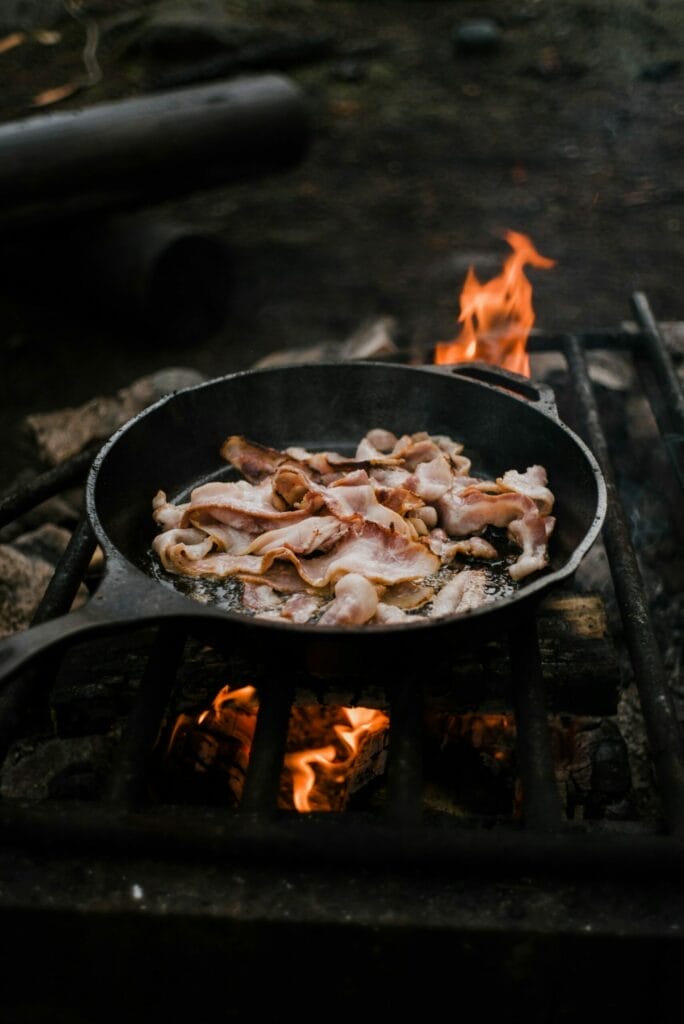
I tried to figure out which country eats more bacon, but in the absence of any statistics that I could find, I can assure you that both countries love bacon.
In 2018, a study done in the UK shows that when asked what food people would eat on a daily basis if there were no consequences, bacon came in the top 3, along with pizza and pasta.
Similar polls in the US show that bacon is the favorite food for 20% of the population, out of all food, and 16% say they can’t live without it, which seems a bit of an exaggeration but Americans aren’t known for their subtlety, so there you go.

I used to spend a lot of time in the US in the 1980s, mostly in NYC and in and around the Syracuse/Utica/Rome area Upstate. You know what I thought was the best thing of all, the one I really miss even now? Sunday brunch at the diner! It may not be a Florida thing I realise but do know that meeting all your friends for brunch is celebrated in American culture, there’s even a film called Diner.
It’s a game, I realise. Here in Glasgow I can order a Full Scottish breakfast and being English born and socialised that way I take it as it comes, mostly, although being a maverick among my compatriots I will ask for no beans and an extra tattie scone instead. American brunch is a culture shock for the English especially – it’s a game where you specify everything exactly as you want it and if your server has to ask for clarification at any point. I’m sure you know the form but your readers may not: three rashers of bacon done real crispy; two eggs over easy; two sausages, links not patties; two pancakes with maple syrup; two rounds of dark rye toast done lighly on the side.
I’m not sure I’d want to play the game at home but in the context it works just fine. I could just wish there was black pudding! And tattie scones for us Scots to mop up our egg yolk with. And yes, American bacon done to a crisp has its place, but give me some Ayrshire back bacon instead!